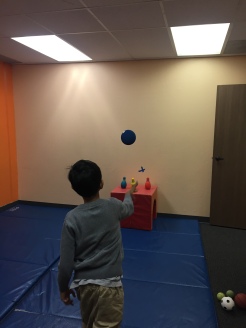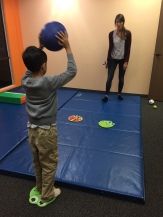Thanksgiving is a time we all love gather with friends and family. Here are some fun ideas to keep the kids (and adults!) entertained and active during the long Thanksgiving weekend:
Turkey Tag: Make small turkey faces or attach some multi-colored feathers or cut pieces of construction paper to clothespins and clip on to the back of everyone’s shirt. Everyone has to run around, trying to grab the others’ feathers! Some ways to play: once all pins are off of someone’s shirt that person is “out” or collect 5 to “win”
Variations: Mix it up by working on other gross motor skills and instead of running, change it to hopping, or skipping, or galluping, or turkey walking (looks like duck walking).
Turkey Hunt: Hide different style/colored turkeys around backyard. Make a checklist to check off what ones are found/seen. Download the free printable above
here
Variations: Similar to our
gross motor easter egg hunt, you can put a gross motor activity on each turkey, or create a chart that corresponds to each number so that when everyone gets back with their turkey’s you can do the gross motor activities (i.e. jumping jacks, hopping on one foot, standing on one foot, jumping up in the air, etc).
Stuff the Turkey: Make a large turkey out of brown grocery bag and two small lunch bags to make the legs on top of the turkey. Use balls of paper to toss into the turkey-who can “stuff” the turkey with the most filling?
Variations: Stand on one foot or in tandem stance when throwing, throw overhand then underhand, throw under legs or over head from behind
Turkey Waddle Relay: Place inflatable turkey or a balloon between legs, and waddle like a turkey to a designated end point and back. Make this into a family-style relay race!
Variations: waddle backwards, hop, waddle sideways, hold it in your hands and ‘duck’ walk
Turkey Walk: Great for younger kids, ask kids to walk around a designated space acting out different types of turkeys. Examples include: happy, sad, tired, scared, excited, big, little, silly.
















